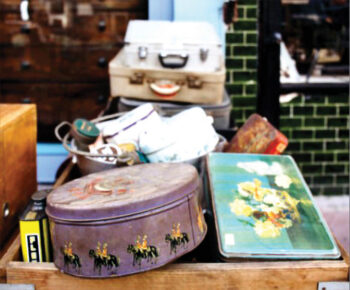 Linda Shannon-Hills
Linda Shannon-Hills
Have you heard the term, “sentimental clutter”? You no doubt have such items in your home. Is an object sentimental to you, but you don’t need it or perhaps you don’t even like it? Of all the habits that cause people to hold on to clutter, an emotional attachment to items such as gifts, souvenirs, and inherited pieces is one of the hardest to beat. But as difficult as it is to give up these items, letting them go might help declutter your home and reduce the stress in your life.
My 91-year-young mom has a difficult time giving up anything to do with the family. She has parents’ items, both grandparents’ photographs, silver, dishes, and other items. She also has her aunt’s scrapbooks and collectibles, her first cousin’s photo albums and treasures, plus her mother-in-law’s china, silver, and photo albums. Report cards, drawings, and ribbons for five daughters as well as many sets of the same photographs, not to mention many items from my dad she can’t part with after 20 years!
I found an article that listed ways you can keep the memory without the physical object. For me, it was a painful exercise of what to keep from close relatives who have passed away. I found a few love letters written by my great grandparents and many other documents fraught with overwhelming emotion. While not painless, approaching a house full of sentimental things, using the following strategies, made the process manageable.
1. Group the memorabilia. To simplify decluttering, gather all the keepsakes and mementos and put them in one spot. Empty drawers, closets, boxes, and all the storage areas.
2. Start with what’s easy. After putting them all in a pile, start slowly, take a break and start again the next day.
3. Create categories. Sort the belongings into groups, such as collections, pictures, and old documents. Then focus your attention on one group at a time.
4. Redirect items. Selling is an option, but don’t count on receiving a windfall. Consider giving them as gifts to children or grandchildren now, or marking them to be passed on later. You can always donate the wares to secondhand stores or create a new picture or quilt out of special pieces of clothing.
5. Set parameters. If you are moving to a smaller place, aim to declutter as much as you need to fit your new home.
6. Enjoy the process. Look at decluttering as, not getting rid of the past, but as a journey through a long life.
Sometimes we just need to remember to share a story to be able to be a part of something. As emotional as the process of decluttering can be, we can learn to see it as a way to open up our world, our space, and our lives.
